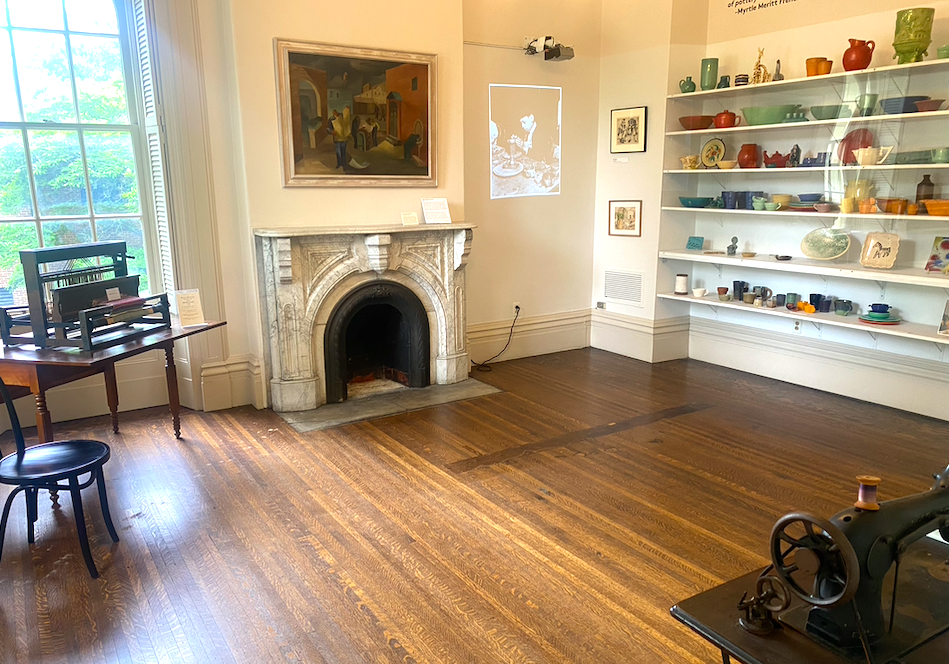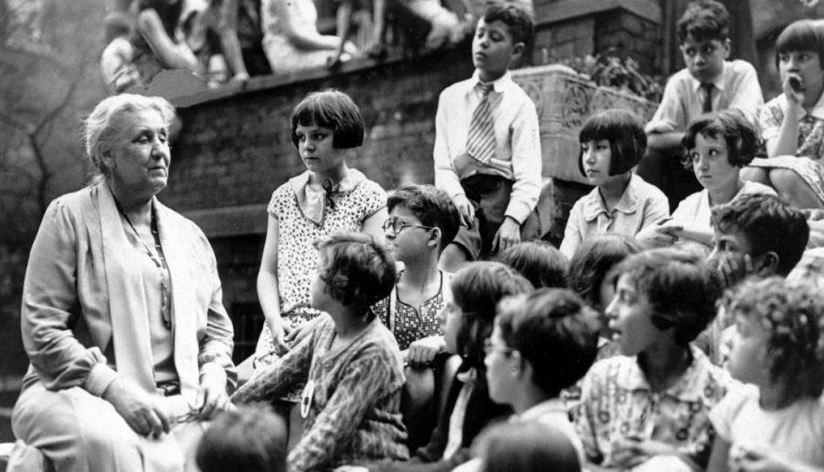In the late 1800s, North America was experiencing rapid industrialization, immigration, and economic growth. Unfortunately, this also meant a rapidly growing disparity between classes as well as poor workers’ rights and an individualistic culture-shift. Partially in response to this, the field of social sciences began to develop, and so emerged two of the greatest sociological reformers in history: Jane Addams and Ellen Gates Starr.
The women met attending Rockford Female Seminary (now Rockford University) and connected over similar progressive upbringings and worldviews. Before eventually becoming the first American woman to be awarded the Nobel Peace Prize in 1931, Jane Addams had already racked up a long list of accomplishments. A progressive feminist and peace activist, Addams used her privilege and influence to advocate for the rights of working-class, primarily immigrant citizens. She wrote and spoke publicly across the nation, and solidified herself as one of the most prominent social workers of the time. She was a founding member of the National Child Labor Committee, a leader in the women’s suffrage movement, and an early member of the National Association for the Advancement of Colored People (The NAACP.)
Ellen Gates Starr, was a progressive leader in her own right and viewed art and literature as crucial parts of humanity’s wellbeing and dignity. As a civil and labor rights activist, Starr protested against police violence and also helped start an Illinois branch of the National Women’s Trade Union League. In 1916, Starr ran for alderman of the Nineteenth Ward of Chicago—just two years after women had earned the right to vote in Illinois. She lost, but the campaign was as much a sincere bid for aldermen as it was an opportunity for Starr to raise awareness about social issues in the neighborhood.

A photo of Ellen Gates Starr next to a newspaper clipping about her recent arrest for picketing alongside striking clothing workers. Photo taken at the Hull-House Museum.
Perhaps the most significant accomplishment of both women, though, is one they achieved together: founding the Hull-House. Around the time Addams and Starr had first met, the settlement house movement was beginning to form with the 1884 founding of Toynbee Hall in London. Settlement houses were social reform spaces where educated, higher-class citizens could “settle” in newly-industrialized, urban, working-class neighborhoods. There, they would volunteer their time and resources to the community they were residing. The intention was to create a space for scholars to study poverty and how to remedy it while simultaneously providing community support.
On one of her many trips to Europe following her graduation from Rockford, Addams visited Toynbee Hall and was inspired. Shortly after, she crossed paths with fellow avid traveler, Starr, and shared intentions to recreate a similar idea in America—a communal space where they could share art and literary knowledge with those who might not otherwise have access to such things. Little did they know, they were about to found one of the most influential settlement houses in the United States. Together in 1889, Addams and Starr leased an old mansion in the Near West Side neighborhood of Chicago, and the Hull-House was born.
The original home and dining hall are all that remain of the settlement’s thirteen buildings, and have since been turned into a museum dedicated to the history of the settlement. But what exactly was the Hull-House and what impact does its incredible history have today?

Photo taken at the Jane Addams Hull-House Museum of a loom and an advertisement for weaving lessons being taught at the settlement.
In the late 1800s, the area around Hull-House was primarily populated by European immigrants and, in the 1920s, families of color began to move into the neighborhood as well. The Hull-House remained a vital community resource for the systematically disenfranchised citizens of Chicago. During its peak years of operation, the settlement was seeing nearly 10,000 people a week from the surrounding neighborhoods.
The residents of Hull-House were educated, upper-class, citizens of Chicago who lived, worked and paid rent at the settlement. They contributed by preparing meals, running a daycare for children of working parents, and teaching classes and practical skills like theater, arts, sewing, English language, literature, music, and more. The Hull-House also had a library, a kindergarten, an art gallery, an employment bureau, and served as a meeting place for a myriad of clubs and community organizations. Most importantly, it was a space to share physical, emotional, and intellectual resources with neighbors.

Photo taken at the Jane Addams Hull-House Museum. An upstairs room displaying pottery made between 1927 and 1937 by participants of the Hull-House Kilns program created by Myrtle Merritt French.
Addams and Starr couldn’t have provided such impactful community support without the help of other progressive women of the time. Florence Kelley was an ardent advocate for labor rights who came to Hull-House after fleeing an abusive husband. She eventually founded the National Labor Committee and was Vice President of the National American Woman Suffrage Association. Alice Hamilton, another resident of Hull-House, was an anti-Nazi activist who used her degree in medicine to advocate against industrial poisoning of the lower-class and call attention to the physical toll of poverty. Her work was fundamental in creating labor laws and employee protections that we now take for granted. Hull-House was also host to Dr. Rachelle Slobodinsky Yarros, a reproductive rights activist, physician, and professor of obstetrics and gynecology. She created what was called the Birth Control Committee of the Chicago Woman’s Club, which you may know now as Planned Parenthood of Illinois. Her work laid the foundation for the reproductive rights movement we see today.
Along with the tremendous residents of the Hull-House, the settlement left an indelible mark on our modern society. Some of the greatest social movements in American history were either birthed at Hull-House or touched by it at some point in their progression. A testament to the power of investing in society’s most neglected and systematically oppressed, the story of Hull-House is one our current leaders could take more than a few notes from.
The Hull-House Museum is free to visit with a reservation and a suggested donation. Don’t live in Chicago? Check out the virtual tour!
“True peace is not merely the absence of war, it is the presence of justice.” – Jane Addams
Top Image Credit: Jane Addams speaking with children at the Hull-House in 1935 via Wikimedia Commons


